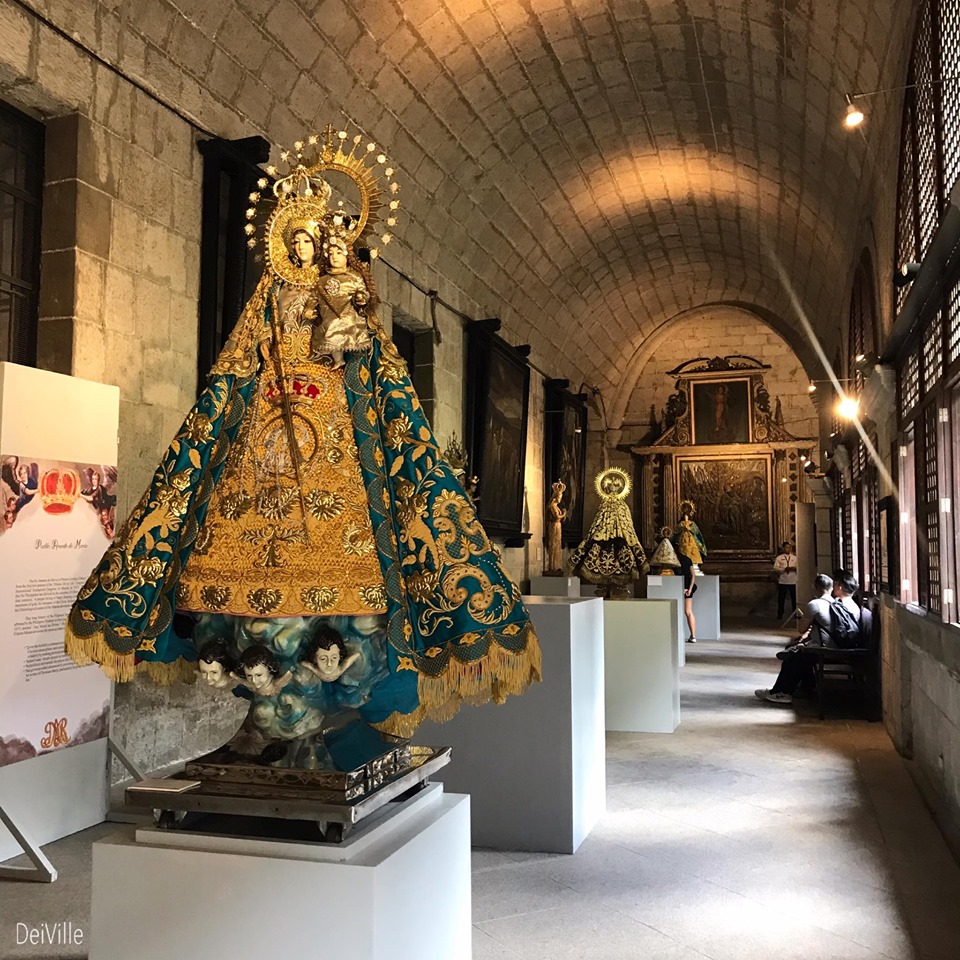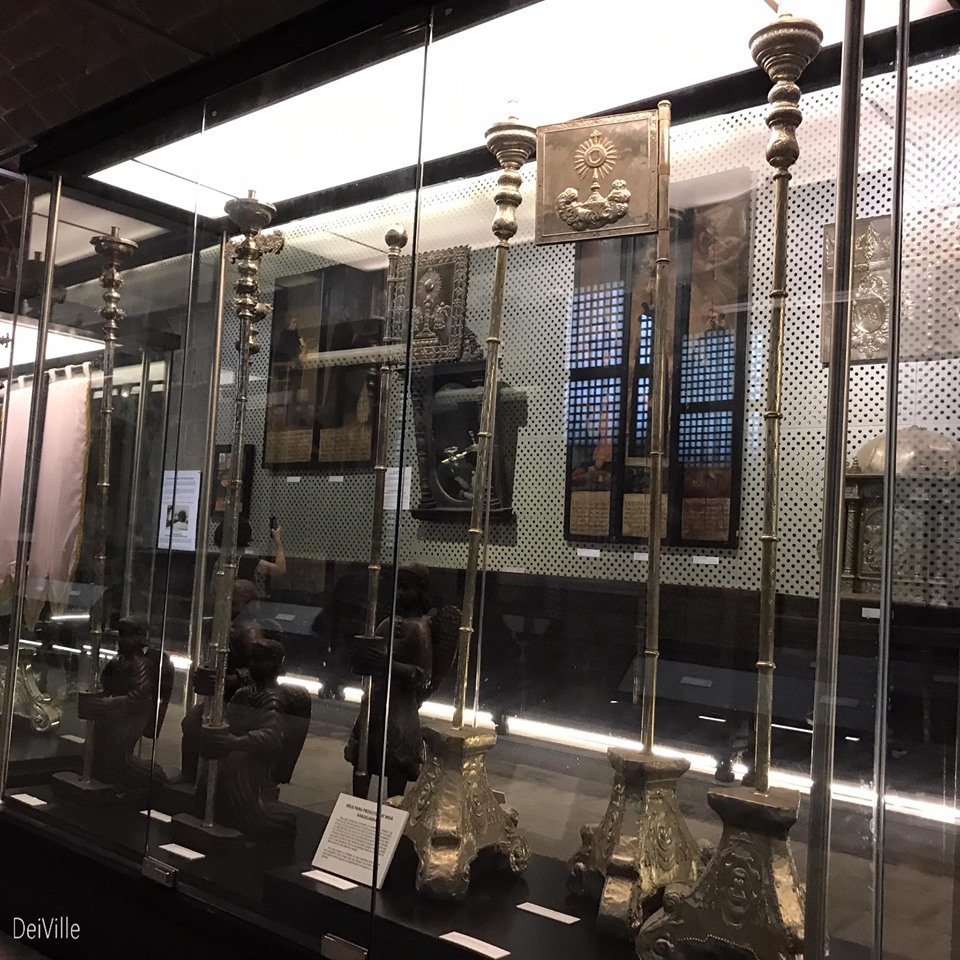Travel Guide: Itinerary, and places to see when planning a visit at Museo San Agustin
This is a not sponsored post. All opinions are mine.
Manila, 27, October 2019 – What to see at Museo San Agustin
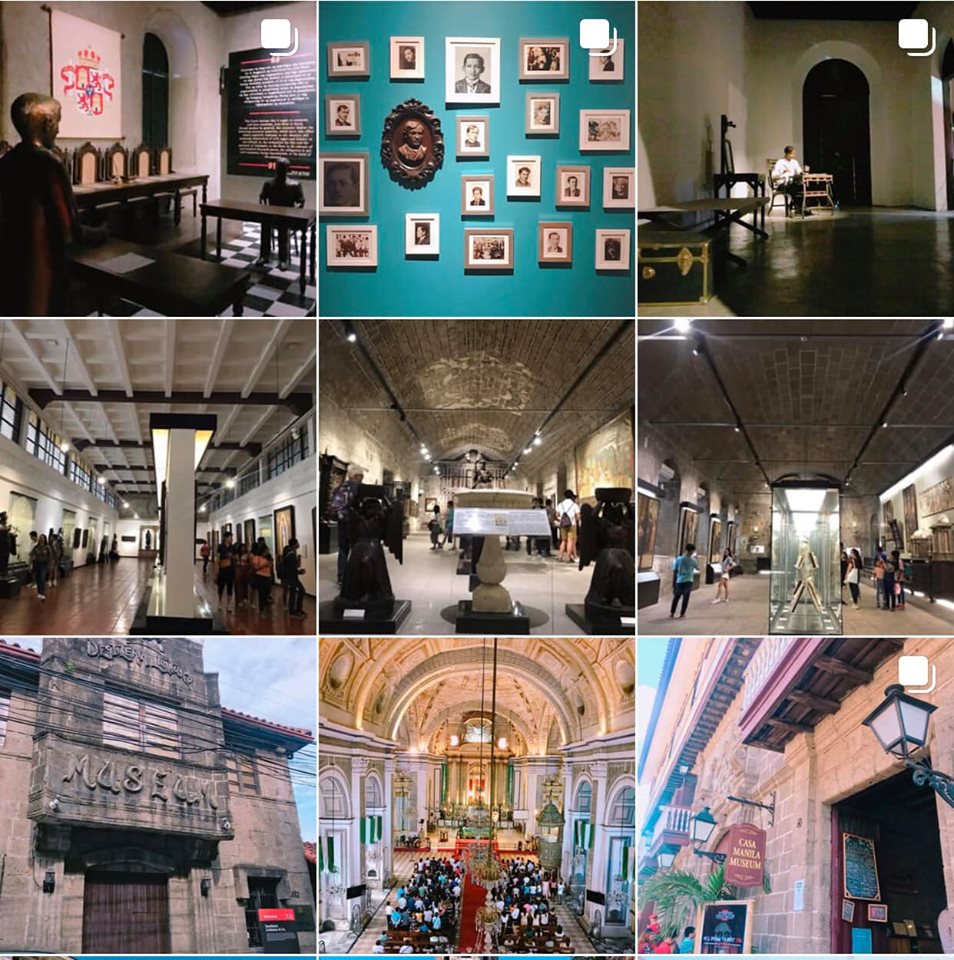
View at: “#deivillegoestointramuros“
Filipino-Spanish ivories. Augustinian friars encourage the works of art with the use of ivory as a medium to express artistry. The sculpture/statues have been fabricated under the influence of Spanish models and style of carvings during the period. Chinese artists, referred as “sangleyes” originally started the art of carvings, until after the 18th century, they were replaced by Filipino artists.
San Agustin church and convent had a remarkable collection of ivories, when the British invasion in 1762, it was said that they had looted around 50 ivory-made images. “The collection that is exhibited here now – gathered in the last two centuries is just a poor sample of what used to be.” (Intramuros Administration marker.)
Included are:
17th century Immaculate Conception
18th century Crucified Christ and Sto. Nino
Pieces donated by the family of Don Luis Ma. Araneta in 2013
Monstrance (17th century, Philippines). Made if gold, diamond, emerald, rubies, and topazes.

Liturgical vessels (1565-1572). The Augustinian missionaries from Spain and Mexico transported to the Philippines almost 100 liturgical vessels and objects of worship. Followed by other objects through the next centuries. In the 17th century, vessels were made directly in the Philippines by Filipino and Chinese silversmiths under the guidance of the missionaries. They equipped the metal-makers with models for chalices, censers, patens, monstrances, aspersoria, and ciboria.
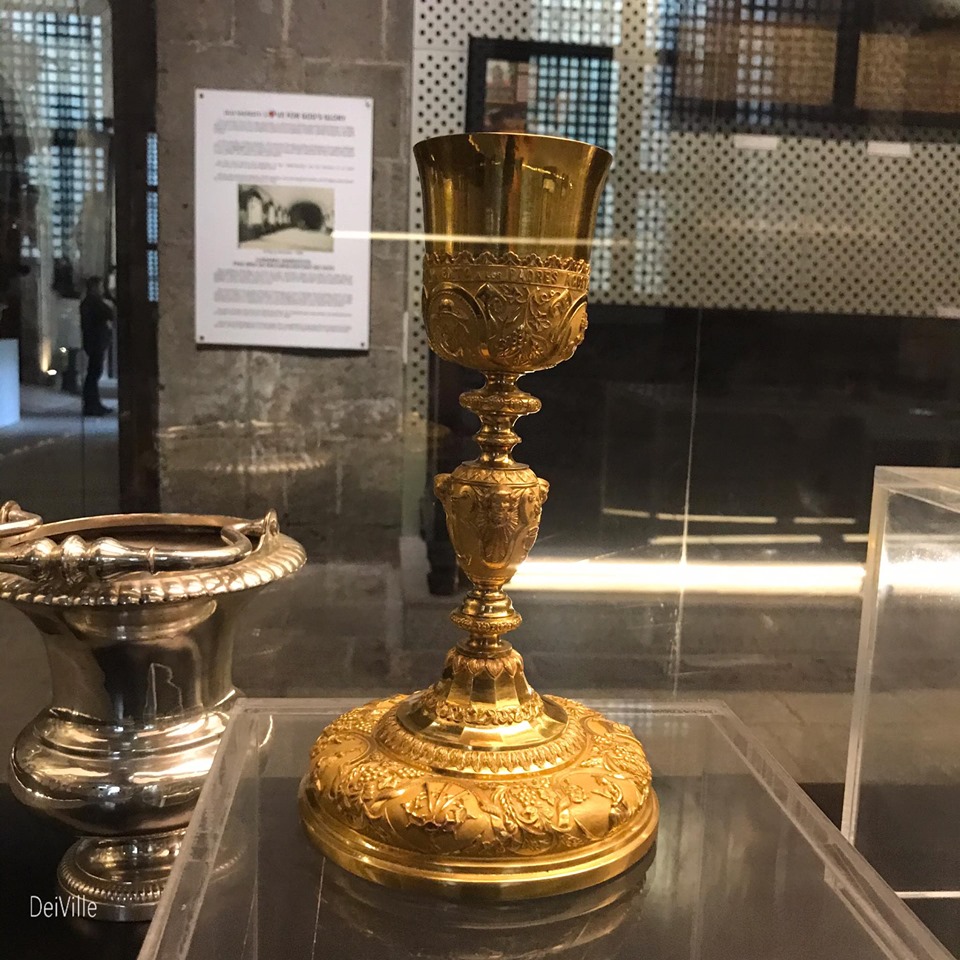
Chalice (1874, Manila). Made by Paulino Salamanca. Donated by the “Ayuntamiento de Manila” to the Augustinian community.
Aspersorium (19th century, Europe). Brass, silver plated.
Wash basin or lavamanos
Wood paintings
Images and altar pieces
Sala De Profundis (1933). Now a columbarium, the place was formerly the ante-chamber of the refectory. “De Profundis” is a prayer made before lunch by the order of the Augustinian community, meaning – “Out of the depths, I have cried to Thee o Lord” as intercession for the departed brethren of the Order, benefactors, and for all the souls of the dead.
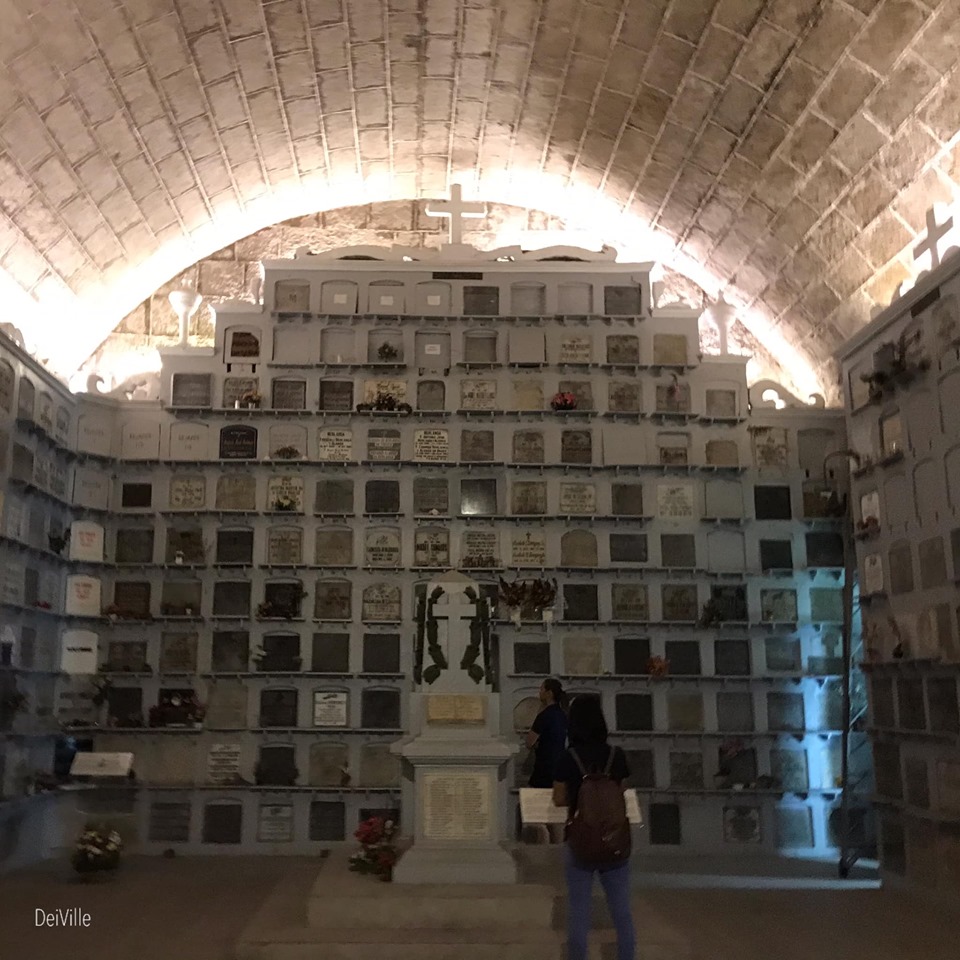
In 1933, the chamber was converted into a crypt where the remains of the members of the Augustinian community, and other Filipino and foreign prominent families are kept. Included are the ashes of Juan Luna (1857-1899) and a monument in memory of the men killed at the Battle of Manila (1945).
Paintings on the ceiling (late 16th century). A few sections of San Agustin convent had paintings on the walls and ceilings. Due to exposure to humidity for a very long period of time, the paintings started to fade out.
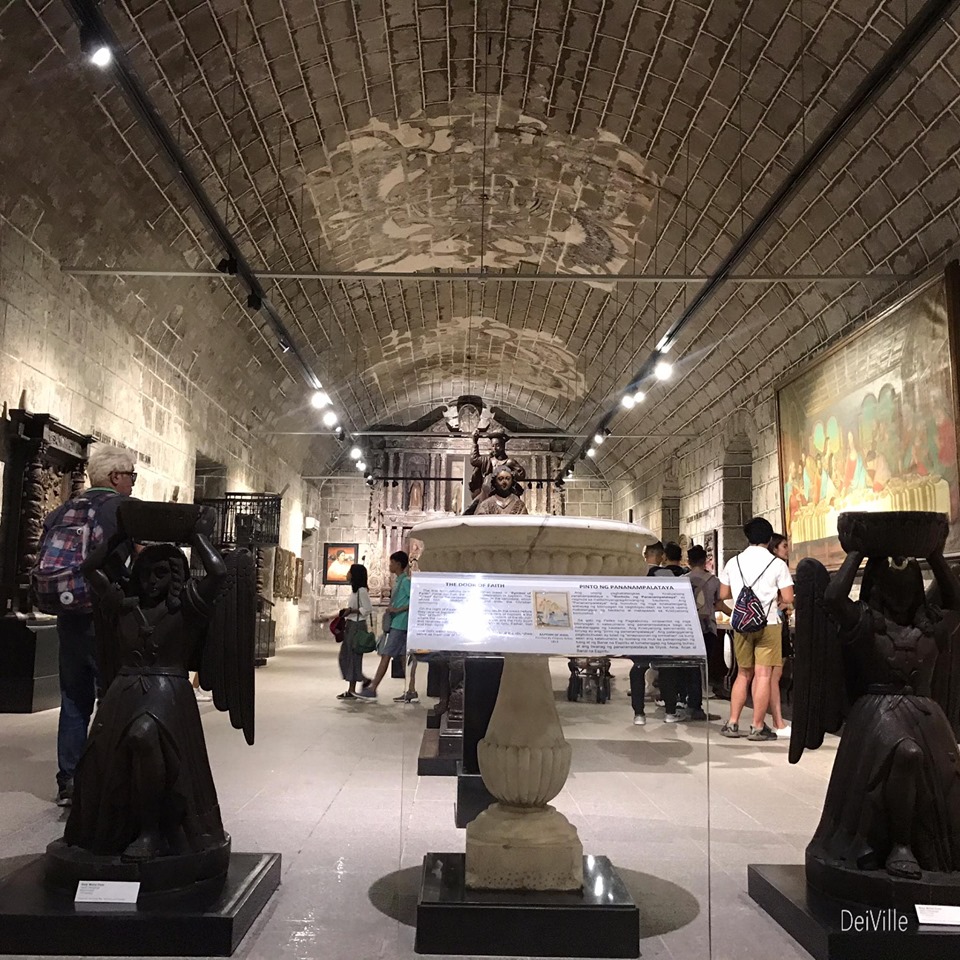
Ceiling of Refectory. Reflects the anagrams of Jesus, Mary and Joseph called “Earth Trinity” in color tones of black, white, red and earth hues. The paintings are considered the oldest mural existing in the Philippines from the Spanish period.
Pieces donated by the family of Don Luis Ma. Araneta in 2013. wood carvings.
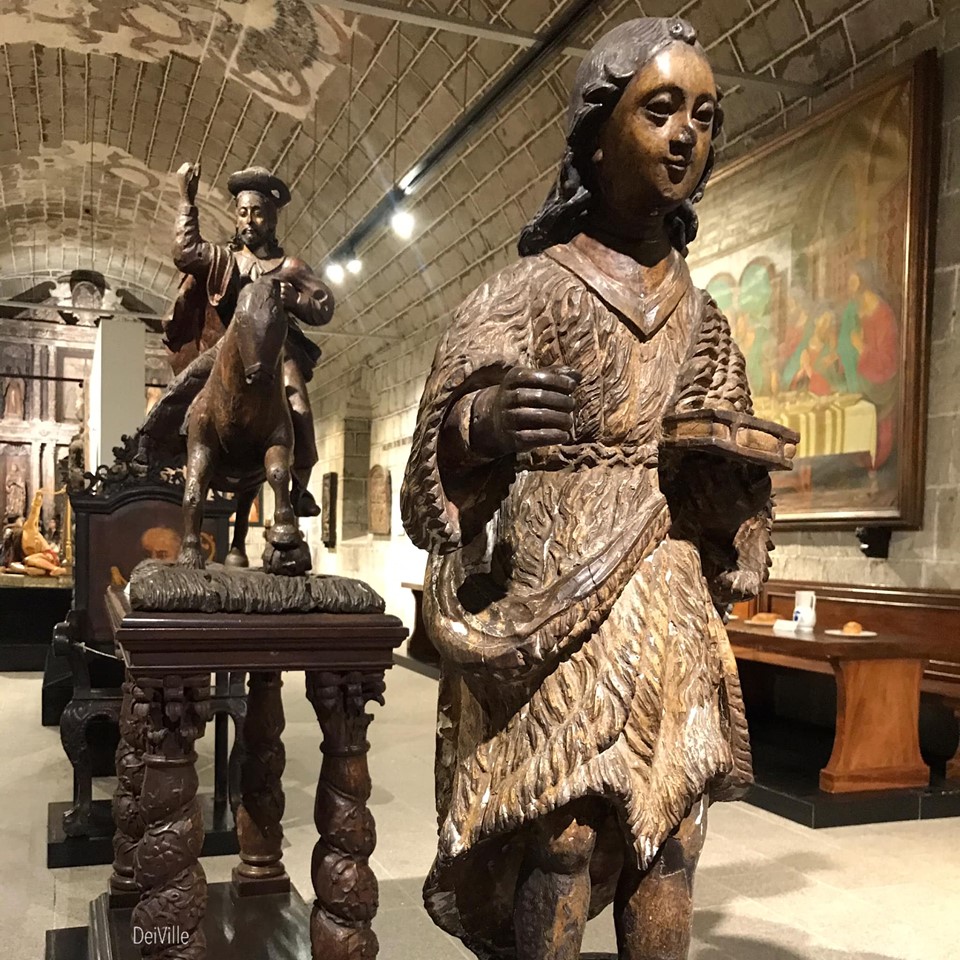
God the Father and the Holy Spirit (18th-19th century, Malvar, Batangas) in santol wood
St. Roch (19th century), polychrome on wood
St. Michael the Arcangel (17th century), polychrome on wood
The Institution of the Eucharist (19th century, Laguna), polychrome, batikuling wood
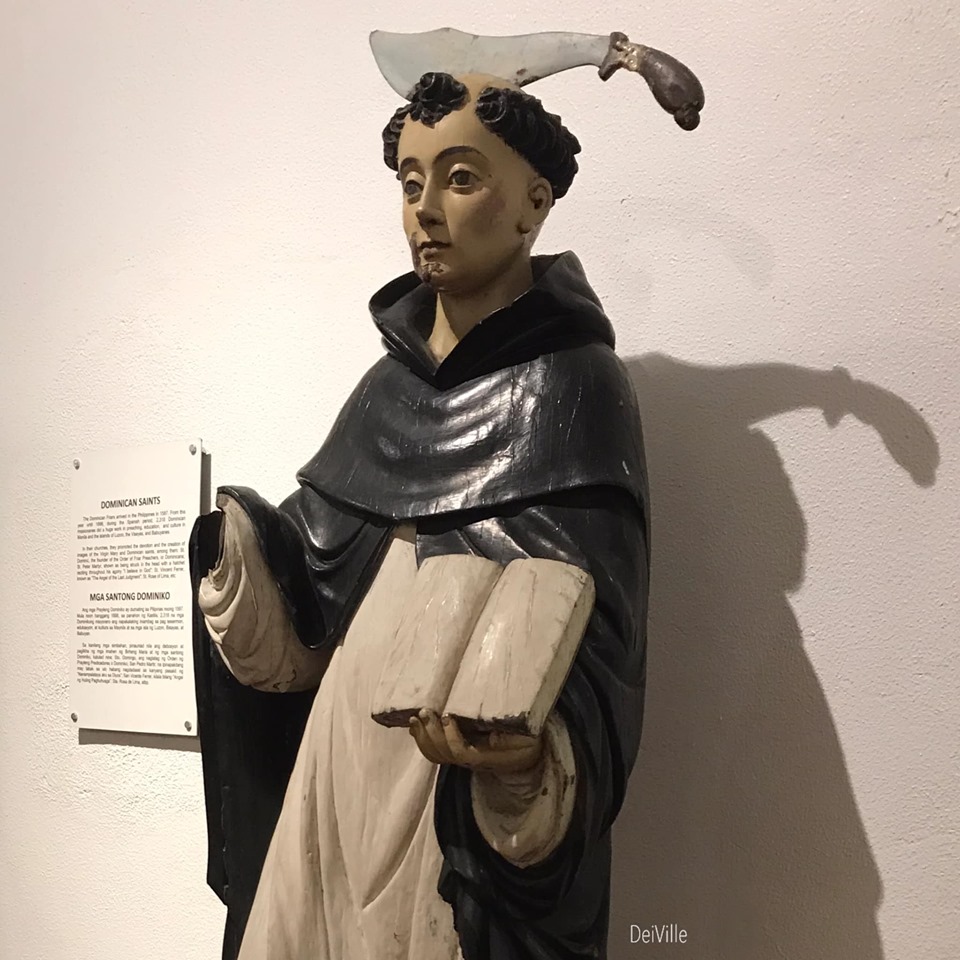
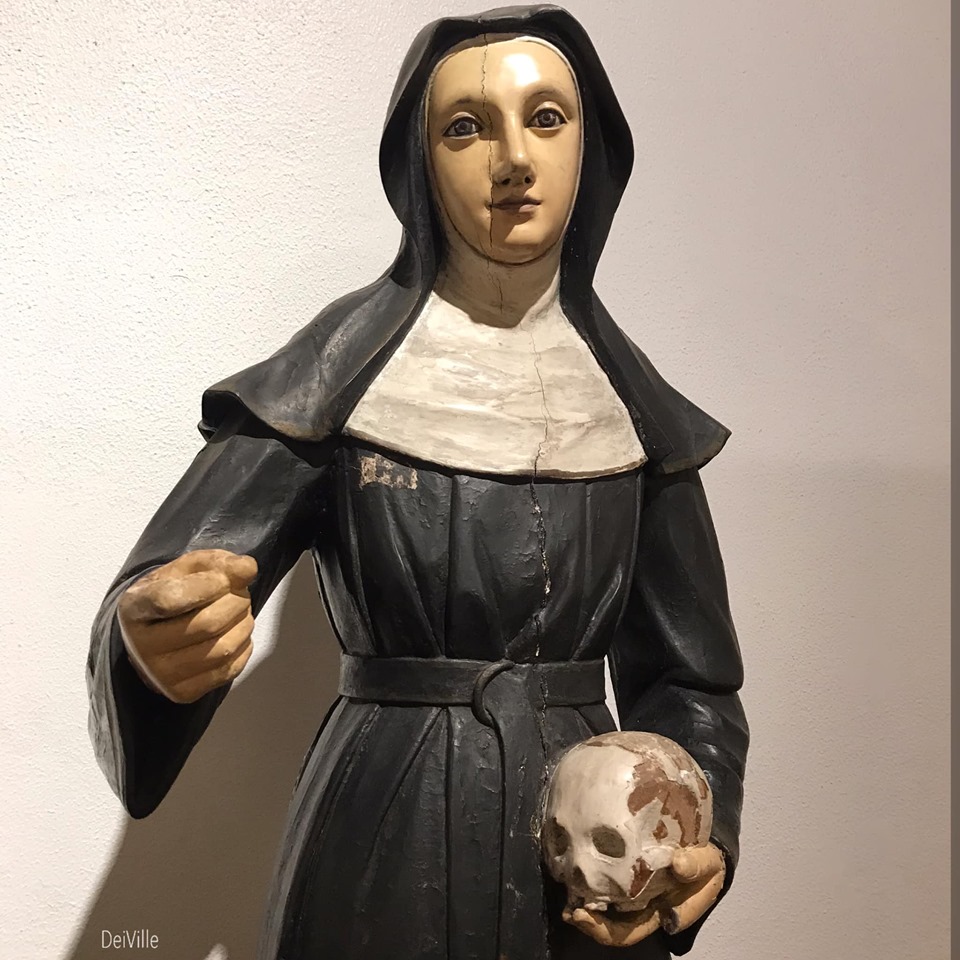
Mexican crucifixes (early 1960’s). The collection of crucifixes was acquired by Don Luis Ma. Araneta from Mexico. The objects were made from corn stalk paste called “j’atzingheni.” The material is made of light-weight fibers of the corn stalk, held together with a substance extracted from the bulbs of wild orchid from a mixture of sugarcane pulp and glue. According to archivists, indigenous group from Michoacan developed the technique for crafting corn stalk figures from the viceroyalty period between 16th to 18th centuries.. These images were also made in Xochimilco and central Mexico. Distributed to the rest of the country, in Spain, and places in America.
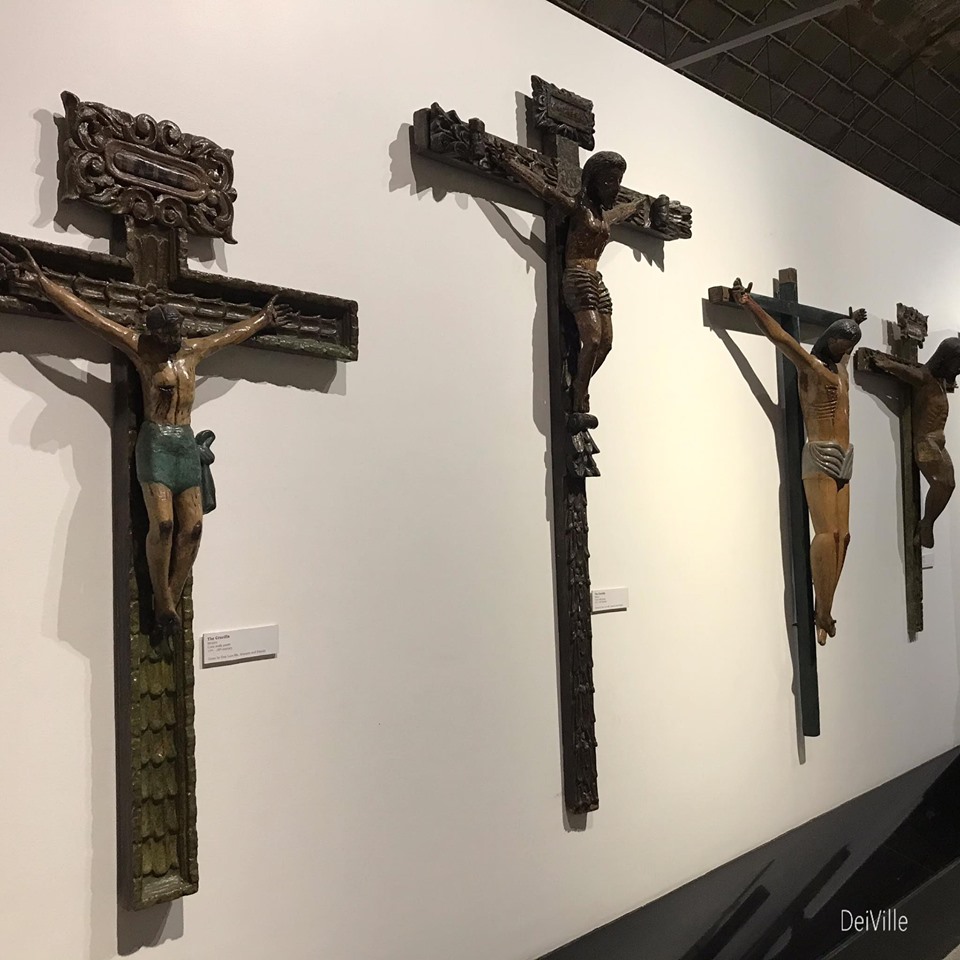
The Library of San Agustin convent (1571). Considered one of the finest libraries during their time. British invasion looted more than 5,000 old books. After reconstruction by the Augustinian friars, the library was again damaged by the Spanish-American war of 1898. The third blow was caused the bombings of Manila in 1945 made by the Americans, almost 20,000 volumes of books were severely damaged. Currently, the library still keeps thousands of books from 1552 to present.
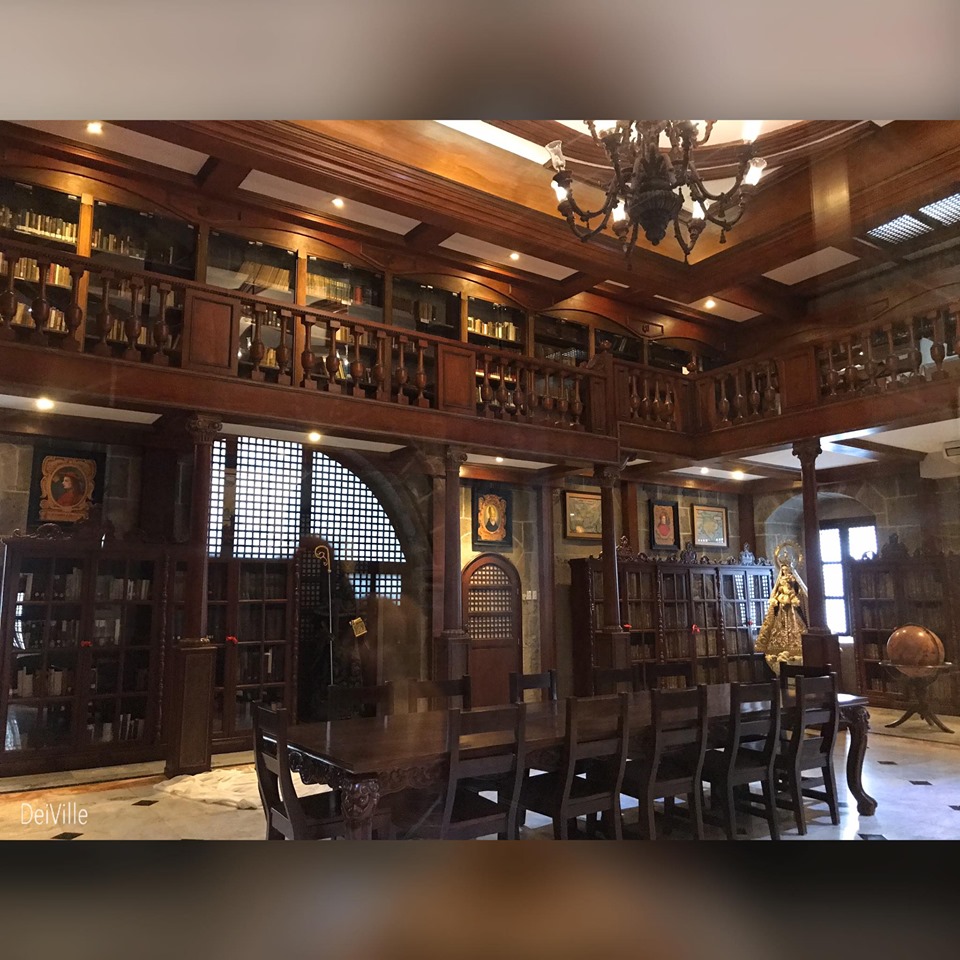
The “Silleria” or Choirstalls (1608-1610). The loft from San Agustin church was regarded as the most important place in the life of an Augustinian, where they gather five times a day to pray. Consisting of 68 carve choirstalls, it was commissioned by Fr. Miguel Garcia Serrano. “The strapwork motifs are done in kamagong with inlays of narra and other woods. Alternate on the back of the lower row of seats are the representation of the sun (as symbol of Jesus and the truth) and the eagle (as symbol of St. Augustine.) In the upper part of the motifs carved are mainly Augustinian: the heart, the mitre, and the pastoral staff. The Provincial stall, in the center, has a bass-relief of St. Augustine. The monster marks of the legs of the seats indicate that these were carved by a Chinese artist. Each stall in the underside is equipped with a mercy (Misericordia), a wooden addition which propped up the infirm during prolonged prayers while standing.” (Intramuros Administration marker.)
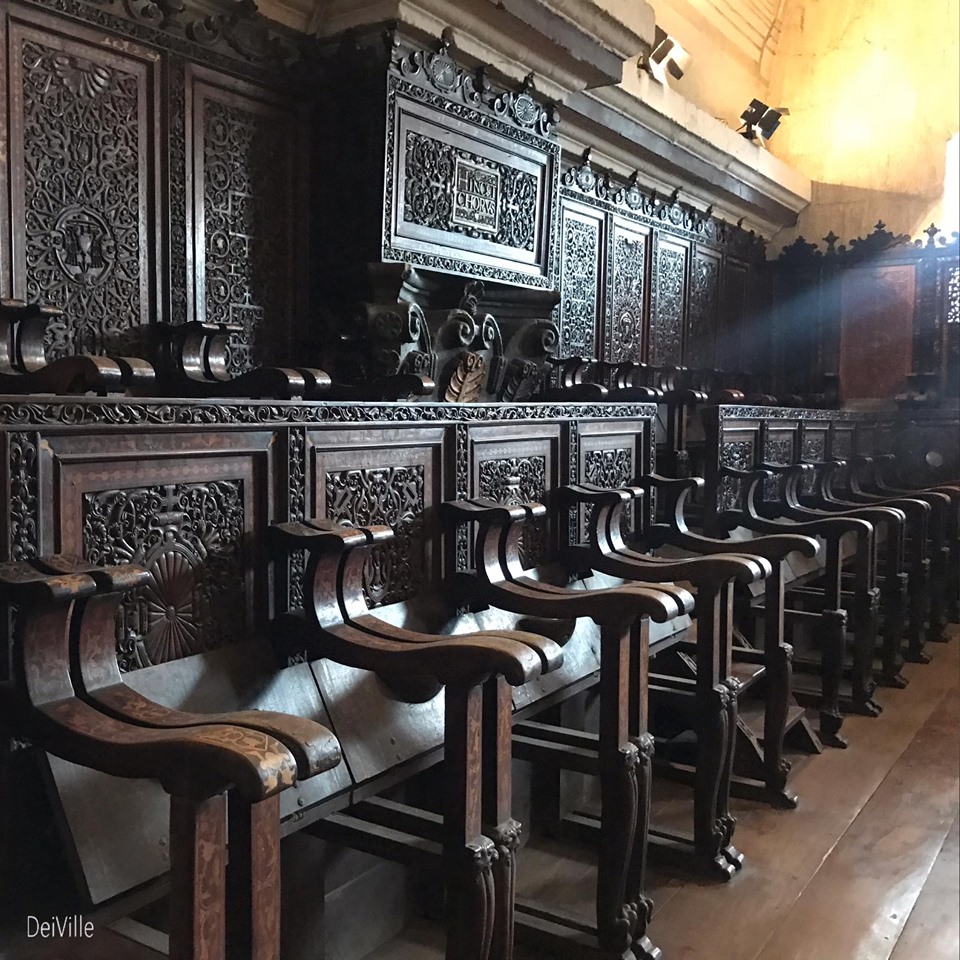
Pipe organ (18th century). The restoration of the pipe organ (inaugurated in 3 November 1998) was collaborated through the efforts of the Philippines Diego Cera Organbuilders, Spain’s Organeria Torquemada, various Filipino Philanthropic institutions and patrons, the Embassy of Spain and Agencia Espanola de Cooperacion Internacional.
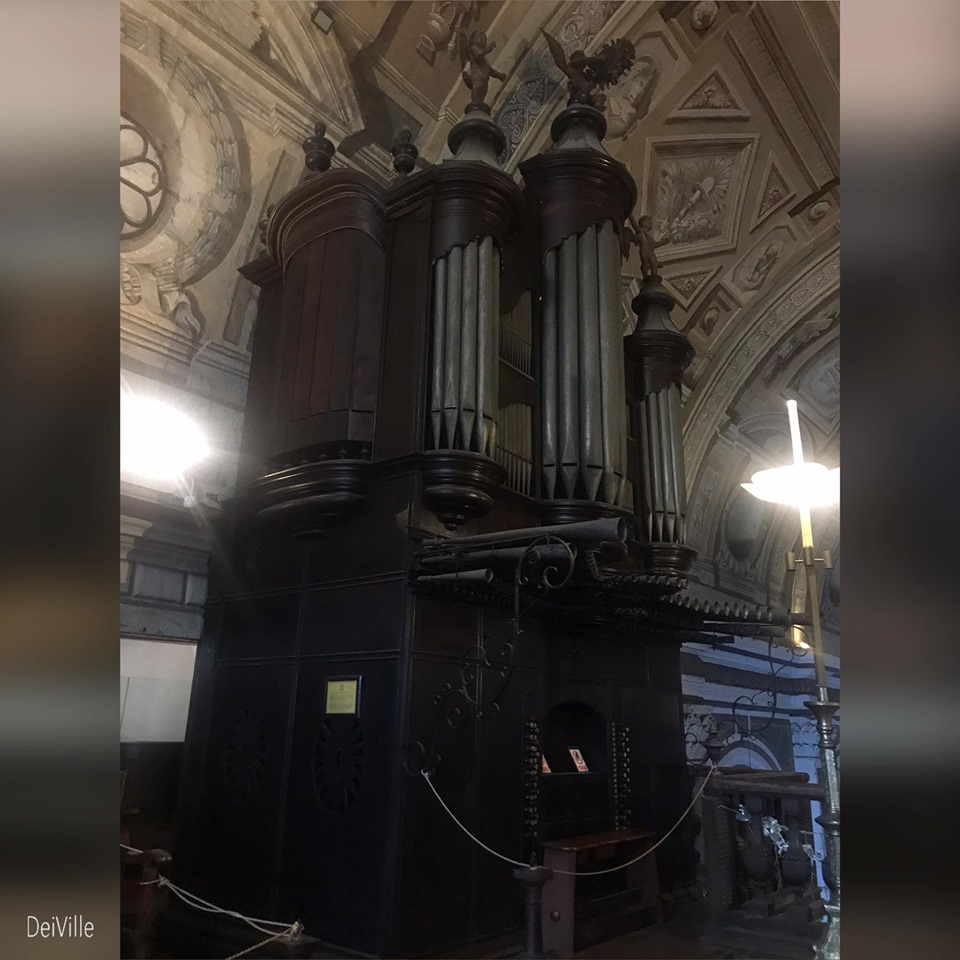
Our DIY series of walking tour of the historical sites in Intramuros was facilitated by Mr. Rence Chan of Walk with Chan.
Complete photos from “Intramuros Open House: Walk with Chan“ are available on our Facebook Page.
DeiVille.com, created by Green Dei (Daryll Villena)
Write us at deiville.com(at)gmail(dot)com for tips on digital branding , entrepreneurship, consumerism, parenting, health talk, women talk, Pinoy travels and Manila lifestyle.
If you find this post helpful, informative or entertaining, feel free to SHARE it.
Get instant updates from deiville.com on:
Facebook | Twitter | Instagram | Pinterest | YouTube
I’d love to know what you think about this post. Feel free to leave your comment.
I do reply to each of your messages or questions so please come back if you’ve left one.
Disclosure: DeiVille receives products in order to conduct reviews. No monetary compensation was provided unless noted otherwise. All opinions are 100% my own. Some posts may contain web links in exchange for payment. In the event of a giveaway, the sponsor is responsible for delivery of the prize, unless otherwise noted in the posting. I only recommend, discuss, or introduce products/services/businesses I personally use and believe will be a good fit for my readers.



